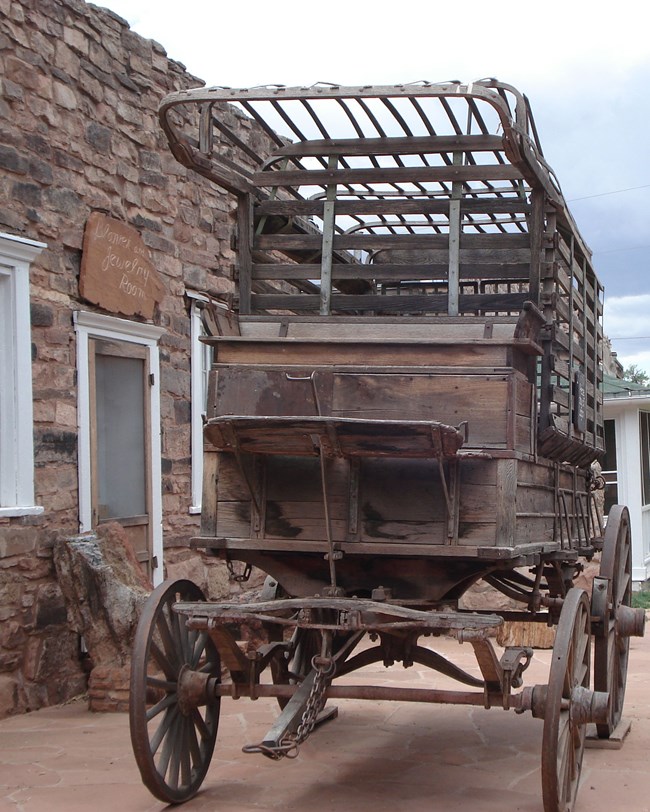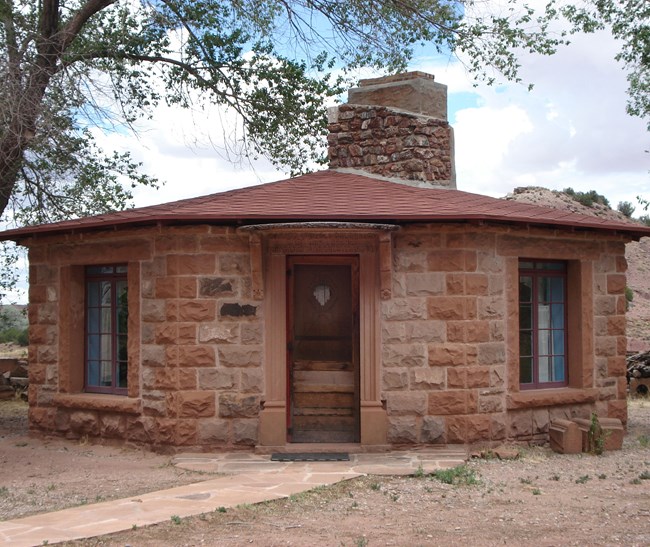Last updated: July 8, 2024
Article
NPS Geodiversity Atlas—Hubbell Trading Post National Historic Site, Arizona
Geodiversity refers to the full variety of natural geologic (rocks, minerals, sediments, fossils, landforms, and physical processes) and soil resources and processes that occur in the park. A product of the Geologic Resources Inventory, the NPS Geodiversity Atlas delivers information in support of education, Geoconservation, and integrated management of living (biotic) and non-living (abiotic) components of the ecosystem.

Introduction
Hubbell Trading Post National Historic Site is located just off Arizona State Highway 264 approximately 1.6 km (1 mi) west of Ganado and 89 km (55 mi) northwest of Gallup, New Mexico in Apache County, Arizona. Established on August 28, 1965, Hubbell Trading Post encompasses about 65 hectares (160 acres) and preserves the oldest continuously operated trading post on the Navajo Nation. The history of the trading post begins in approximately 1874, when Anglo-European trader William Leonard established a trading post in the Ganado Valley. Using “squatter’s rights”, Juan Lorenzo Hubbell purchased the Leonard post and later filed for a homestead claim. As the Navajo Nation lands were expanded in 1880, the land Hubbell acquired would become one of few privately owned parcels of land within the boundaries of the Navajo Nation. The national historic site consists primarily of a historic vernacular landscape from the period (1878–1967) that the trading post was actively run by the Hubbell family. During the first half of the 20th century, Hubbell built an economic empire consisting of more than 20 trading posts that was able to influence the production and development of traditional designs that remain in use today (National Park Service 2007).
Geologic Setting
The geology of Hubbell Trading Post National Historic Site consists of Mesozoic and Cenozoic sedimentary rocks spanning from ~225 million years ago to the present. The bedrock underlying the historic site is composed of sandstone and claystone of the Triassic Monitor Butte Member of the Chinle Formation, overlain by a veneer of Quaternary alluvium. Immediately surrounding Hubbell Trading Post are the Triassic Petrified Forest and Sonsela Members of the Chinle Formation, as well as Miocene–Pliocene-age terrace, eolian, and upper Bidahochi Formation deposits. The Pueblo Colorado Wash cuts through the northernmost part of Hubbell Trading Post, while the remainder of the national historic site consists of leveled terraces, rising from north to south, from which native vegetation was removed for farming and raising livestock (National Park Service 2007).
Regional Geology
Hubbell Trading Post National Historic Site is a part of the Colorado Plateaus Physiographic Province and shares its geologic history and some characteristic geologic formations with a region that extends well beyond park boundaries.
- Scoping summaries are records of scoping meetings where NPS staff and local geologists determined the park’s geologic mapping plan and what content should be included in the report.
- Digital geologic maps include files for viewing in GIS software, a guide to using the data, and a document with ancillary map information. Newer products also include data viewable in Google Earth and online map services.
- Reports use the maps to discuss the park’s setting and significance, notable geologic features and processes, geologic resource management issues, and geologic history.
- Posters are a static view of the GIS data in PDF format. Newer posters include aerial imagery or shaded relief and other park information. They are also included with the reports.
- Projects list basic information about the program and all products available for a park.
Source: NPS DataStore Saved Search 2904. To search for additional information, visit the NPS DataStore.
A NPS Soil Resources Inventory project has been completed for Hubbell Trading Post National Historic Site and can be found on the NPS Data Store.
Source: NPS DataStore Saved Search 2976. To search for additional information, visit the NPS DataStore.
Related Articles
Hubbell Trading Post National Historic SitentNational Park Service Geodiversity Atlas
The servicewide Geodiversity Atlas provides information on geoheritage and geodiversity resources and values within the National Park System. This information supports science-based geoconservation and interpretation in the NPS, as well as STEM education in schools, museums, and field camps. The NPS Geologic Resources Division and many parks work with National and International geoconservation communities to ensure that NPS abiotic resources are managed using the highest standards and best practices available.

